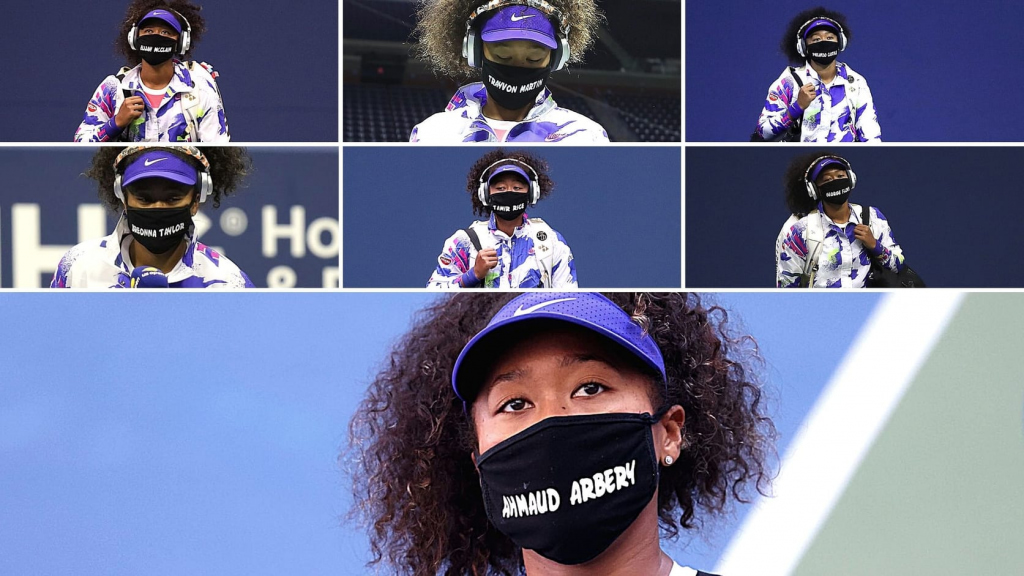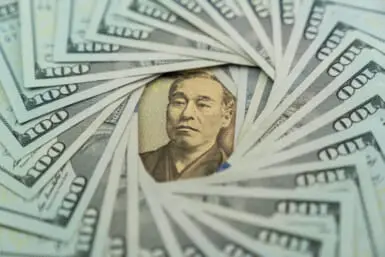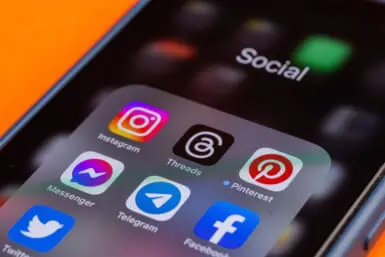Naomi Osaka won her third Grand Slam title this weekend after coming back strongly to defeat Belarusian Victoria Azarenka 1-6 6-3 6-3 in the final of the US Open at Flushing Meadows. The Japanese-Haitian player was out of sorts in the first set and was then in danger of going down 3-0 in the second before she regained her composure and started to dominate her opponent, winning 10 of the next 12 games.
Osaka, 22, will now move up to number three in the world rankings, but it’s not just her tennis playing that has got people talking in recent weeks. An increasingly vocal activist for the Black Lives Matter movement, she indicated that she would be sitting out the Western & Southern Open semifinals in August in protest to the police shooting of Jacob Blake.
— NaomiOsaka大坂なおみ (@naomiosaka) August 28, 2020
“I don’t expect anything drastic to happen with me not playing, but if I can get a conversation started in a majority white sport, I consider that a step in the right direction,” Osaka posted on her social media pages. At the US Open, she tried to continue that conversation by wearing a different face mask for all of her games at the Arthur Ashe Stadium. Each one bore the name of a Black person who had been killed either by the police or a white civilian. Here are the tragic stories behind each of the seven names.
First Round: Breonna Taylor
— NaomiOsaka大坂なおみ (@naomiosaka) September 1, 2020
Shortly after midnight on June 13, 2020, three police officers: Jonathan Mattingly, Brett Hankison and Myles Cosgrove entered Breonna Taylor and Kenneth Walker’s apartment using a battering ram (they stated that they’d announced themselves and knocked several times, though Taylor’s family and a neighbor have disputed this). Thinking that they were intruders, Walker, who had been asleep, opened fire and a gunfight ensued. Taylor, a medical technician, was shot eight times before dying on her hallway floor.
The main targets of the investigation were Jamarcus Glover and Adrian Walker who were suspected of dealing drugs in a house more than 10 miles away. Taylor had dated Glover two years earlier and the search warrant included her residence as the police believed it was being used to receive drugs. None were found at the apartment. A wrongful death lawsuit was filed against the officers and Hankison was relieved of his position in June. Walker was initially charged with the attempted murder of a police officer, but that charge was dropped in May.
Second Round: Elijah McClain
— NaomiOsaka大坂なおみ (@naomiosaka) September 3, 2020
On August 24, 2019, massage therapist Elijah McClain was approached by three officers while walking home from a convenience store. They apprehended him after an Aurora citizen had called to report the suspicious activities of a man wearing a ski mask. Though the caller felt the man had been acting in a “sketchy” manner, he said he wasn’t armed and didn’t believe anyone was in danger. The bodycam footage shows McClain asking the officers to leave him alone. They described his behavior as “crazy” and asked if he was on drugs. He was placed in a chokehold before being injected with ketamine in an attempt to sedate him.
“I can’t breathe,” he pleaded. “I have my ID right here. My name is Elijah McClain. That’s my house. I was just going home. I’m an introvert. I’m just different. I have no gun. I don’t do that stuff. I don’t do any fighting. Why are you attacking me? I don’t even kill flies! I don’t eat meat! But I don’t judge people who do eat meat. Forgive me. All I was trying to do was become better. I will do it. I will do anything.” Three days after arriving at the hospital, McClain was declared brain dead and was removed from the life support machine a few days later.
Third Round: Ahmaud Arbery
— NaomiOsaka大坂なおみ (@naomiosaka) September 4, 2020
In the afternoon of February 23 of this year, Ahmaud Arbery was out jogging near his home in Brunswick when he was fatally shot by Travis McMichael who was heard saying a racist slur as he stood over the dead man’s body. Travis’ father Gregory, a former police detective, was also at the scene while their neighbor William Bryan captured the crime from his cellphone. The McMichaels both claimed that Arbery, who was unarmed, was shot in self-defense. They told the police he resembled a man they suspected had been breaking into properties in the area, however, no reports were filed regarding these alleged break-ins.
A video of the incident was uploaded on May 5 at the behest of Gregory McMichael who thought it would make him and his son look better. It quickly went viral and fueled a national outcry as the men responsible were still free. Two days later and 74 days after the murder had taken place, the McMichaels were finally arrested. On May 21, Bryan, who reportedly tried to block Arbery during the pursuit, was also taken into custody. Questions have been raised about the conduct of Glynn County Police and its history of racial profiling. The first two district attorneys assigned to the case recused themselves due to personal connections with one of the defendants.
Fourth Round: Trayvon Martin
— NaomiOsaka大坂なおみ (@naomiosaka) September 7, 2020
On the night of February 26, 2012, George Zimmerman called Sanford police non-emergency number to report a suspicious-looking black man in a hoodie whom he thought might have been up to no good in the Twin Lakes gated community area where he was a neighborhood watch captain. The dispatcher asked if he was following him to which Zimmerman replied “yeah.” Told not to, he ignored the instructions, got out of his car and confronted the man.
It led to a violent encounter that ended with 17-year-old Trayvon Martin being shot to death. The teenager, who had just been suspended from school after they found drug residue in his bag, was in the area with his father to visit his dad’s fiancée and her son. He was on his way back to her place after buying a bag of skittles and some juice at the convenience store when the incident occurred. A girl who was on the phone to Martin at the time said she heard a scuffle and then the line went dead. Zimmerman, who was reportedly bleeding from the nose and the back of his head, claimed he was acting in self-defense. He was charged with second-degree murder. On July 13, 2013, the six-person jury rendered a not guilty verdict on all counts.
Quarter Final: George Floyd
— NaomiOsaka大坂なおみ (@naomiosaka) September 9, 2020
On the evening of May 25 of this year, George Floyd was killed after police officer Derek Chauvin knelt on his neck for seven minutes and 46 seconds – not the eight minutes and 46 seconds that has become a symbol of police brutality – while he was handcuffed and lying face down on the ground. He begged the officers to let him go, telling them he couldn’t breathe more than 20 times. He also pleaded for his mother and at one point, said “You’re going to kill me, man.”
Floyd, who was accused of using a counterfeit 20-dollar bill to buy cigarettes at the Cup Foods grocery store, was eventually rolled onto a gurney and taken to Hennepin County Medical Center in an ambulance. He was pronounced dead an hour later. The four officers involved were fired the following day as demonstrators took to the streets of Minneapolis. Protests soon spread around the globe. Chauvin has been charged with second-degree murder, third-degree murder and manslaughter. The other three officers have been charged with aiding and abetting second-degree murder.
Semi Final: Philando Castile
— NaomiOsaka大坂なおみ (@naomiosaka) September 11, 2020
At around 9 pm on July 6, 2016, Philando Castile was driving home from a grocery store with his partner Diamond Reynolds and her four-year-old daughter when police officer Jeronimo Yanez pulled him over. After informing him that his brake light was out, Yanez asked the man in the car for his license and insurance. Castile passed him a piece of paper and calmly told the officer that he had a firearm (which he was licensed to carry). “Don’t reach for it then,” was the response. Yanez repeated the phrase “don’t pull it out,” while drawing his own gun.
Yanez fired seven close-range shots at Castile, hitting him five times. Two pierced his heart. Reynolds, who tried to tell the officer that her boyfriend had been reaching for his ID and not a gun, live-streamed the aftermath of the incident on Facebook. In a video from the squad car of Joseph Kauser (the other officer at the scene) Reynold’s daughter can be heard saying, “Mom, please stop cussing and screaming ’cause I don’t want you to get shooted.” Yanez was charged with second-degree manslaughter and two counts of dangerous discharge of a weapon. He was acquitted of all charges but was immediately fired by the City of Saint Anthony.
Final: Tamir Rice
— NaomiOsaka大坂なおみ (@naomiosaka) September 13, 2020
On November 22, 2014, 12-year-old Tamir Rice was pacing around Cudell Recreation Center park in Cleveland 200 yards from his home with a replica toy gun in his hand. He would occasionally extend his right arm out, pretending to shoot. A concerned citizen called the police. “The guy keeps pulling a gun out of his pants. It’s probably fake but you know what? It’s scaring the **** out of me.” After describing his clothes, the caller said he was probably a juvenile. The words “fake” and “juvenile” were not passed on to the dispatcher who requested a squad car visit the scene.
Within two seconds of arriving at the park, police officer Timothy Loehmann shot Rice twice from less than three meters. He and his partner Frank Garmback claimed to have told the young boy three times to raise his hands, however, Rice’s family questioned the speed of the incident. Loehmann also stated that it appeared that the youngster was going to draw his weapon. The orange safety tip that indicates it’s a toy gun had been removed from the airsoft replica. Rice died the following day. It was later revealed that Loehmann had been deemed emotionally unstable and unfit for duty in his previous posting but didn’t disclose this information when he applied for a position with the Cleveland Police. He was fired in 2017.









